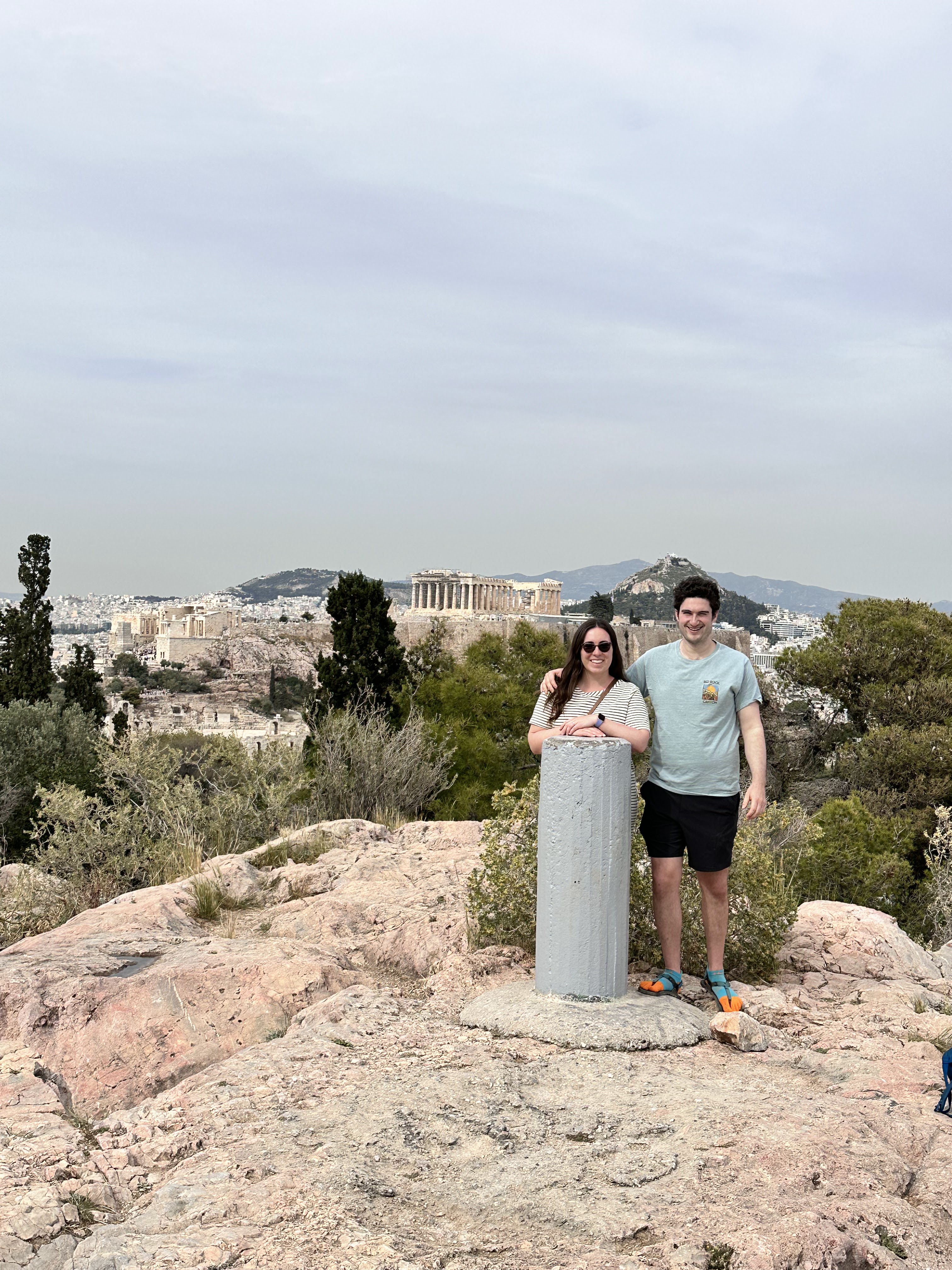At started the day by walking to the city building where Lizy’s parents got married. It was a little bit of struggle explaining to the security guard why we wanted to see the building. He ended up letting us inside to see the exhibition of photos on the lobby level. We never said that, but I guess he was instructed to let people in to see the photos. The entrance lobby was very formal. It had photos on either side and there was a grand staircase leading upstairs adorned with a classical bust.
Lizy tried again to explain that we wanted to see the upstairs where her parents were married. It was a struggle on both their parts to communicate because of the language barrier. In the end he gave her a number she could call to get an appointment. She later tried to call the number on a few different occasions, but was never able to get a response. There was no answering machine. I think she still found it meaningful being in the lobby.
The next stop was the Archeological Museum. It was housed in a grand building. I got a photo of Lizy walking in.
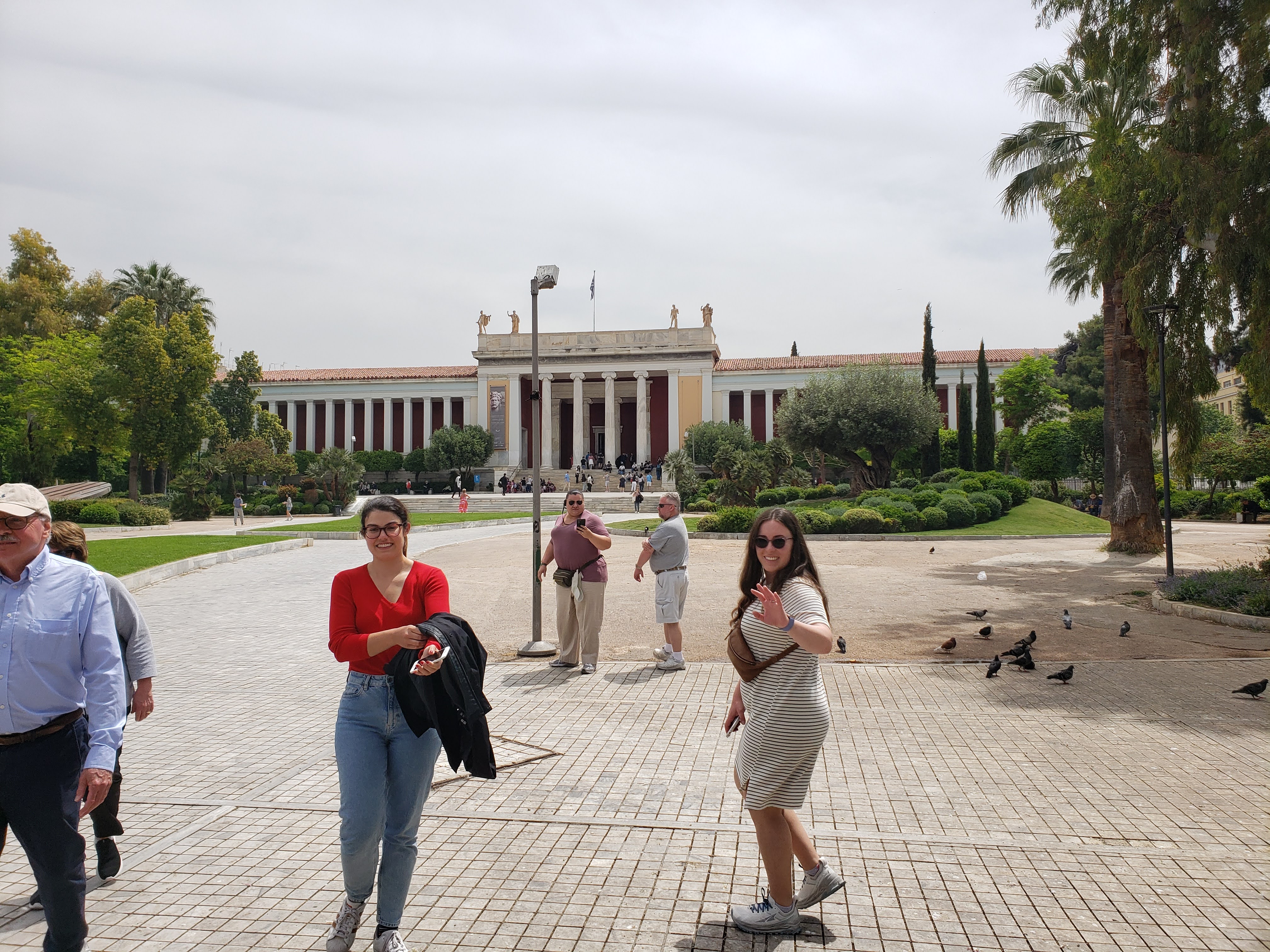
The main part of the museum was an exhibit that had artifacts chronologically from around Greece from even before the Mycenaean times (~3000 BC) ending in the early Roman Empire period. The second biggest part of the museum was a pottery collection located on the second floor that traced the history of pottery in Greece through the same time period. There was also an Egyptian exhibit which was mostly closed. I tried to figure out why it was closed, but people kept telling me to talk to someone else. They also had the remains of an ancient computation device called the Antikythera Mechanism. The device is described as being the oldest known analogue computation device. It was composed of a quite a number of gears. It was used to compute when different astronomical events were going to occur. I had no idea the ancient Greeks had this kind of technology, so I found this especially interesting. Lastly, there was an exhibit displaying some artifacts from a Minoan city on Santorini that had been preserved in volcanic rock, similar to Pompeii. We later went to the archeological site when in Santorini and I’m glad we saw the exhibit first because all the wall paintings found at the site had been ripped out and brought to either this exhibit or the archeological museum in Santorini. Seeing the wall paintings, for me, was more interesting than seeing the well preserved buildings with barren walls. I’ll include some photos of some of the best artifacts.
This is the mask of Agamemnon. It was found in one of the giant dome tombs around the city of Mycenae. It is attributed to being owned by the mythical character Agamemnon, who is most vividly depicted in Homer’s epics.
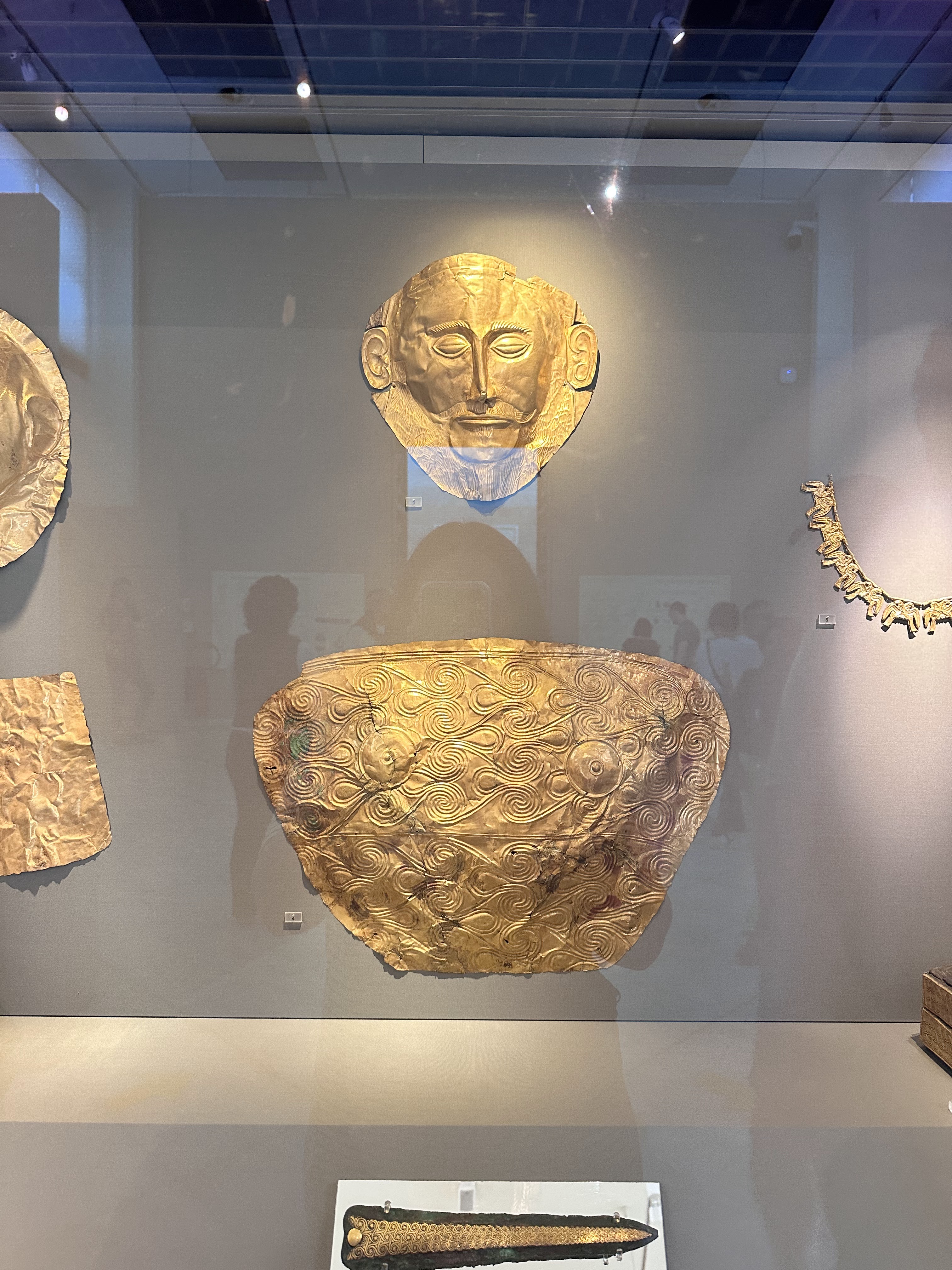
This is a miniature version of the statue that was in the Parthenon on the Acropolis. This statue is only about one meter high, whereas the statue in the temple was around 11.5m high. The statue from the parthenon has been lost to time, so these miniatures are the best way to piece together what the parthenon looked like in antiquity.
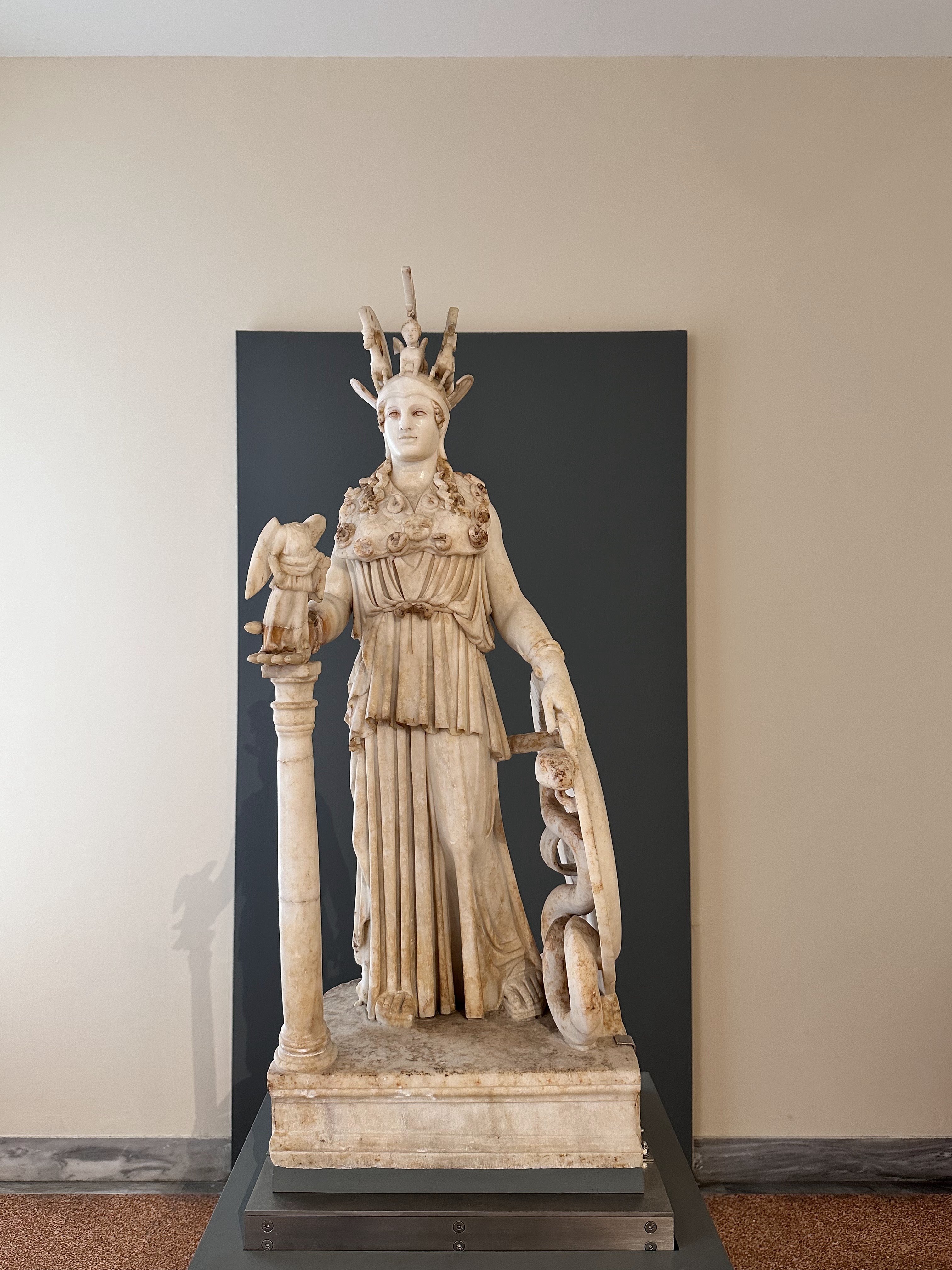
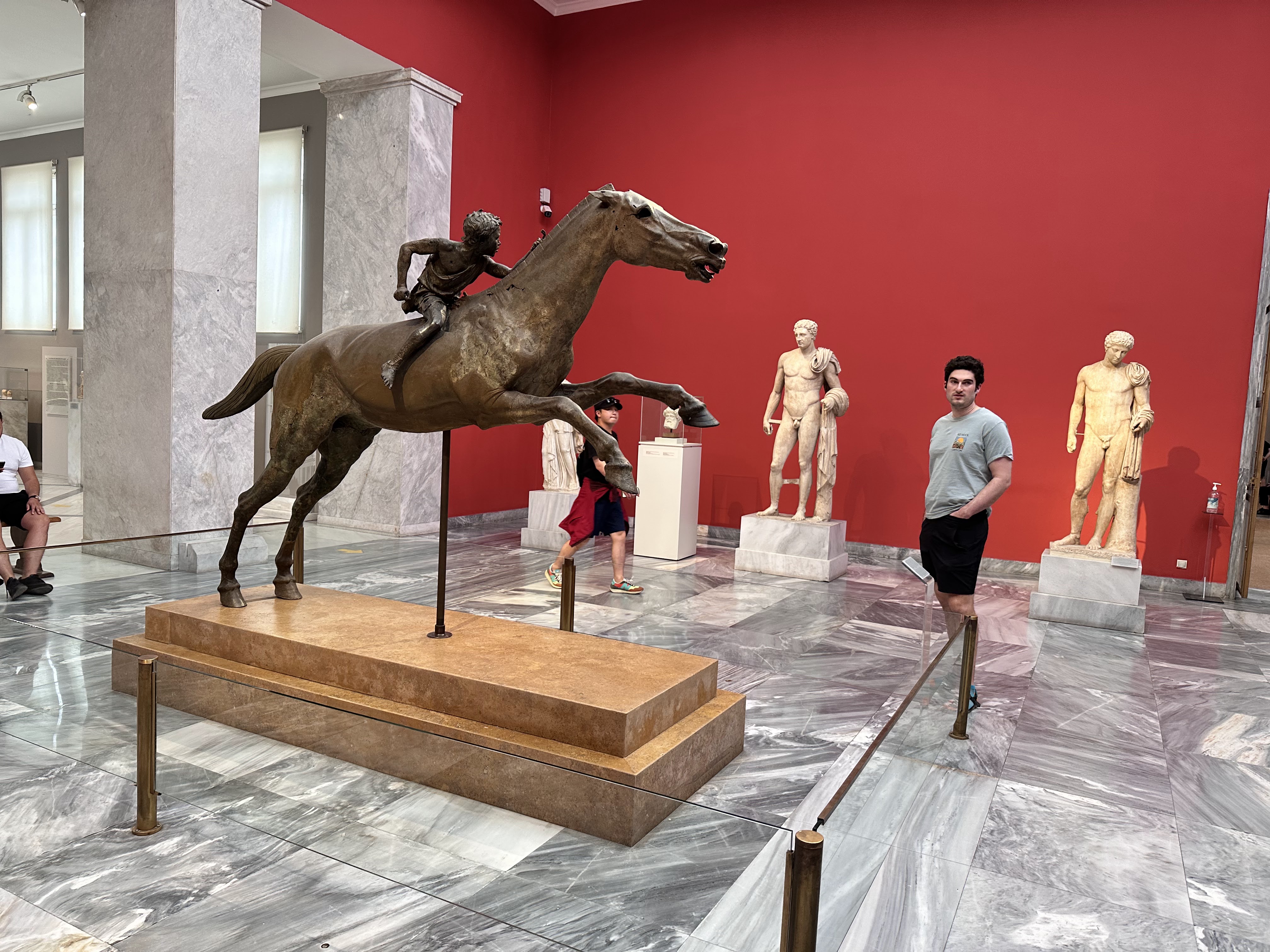
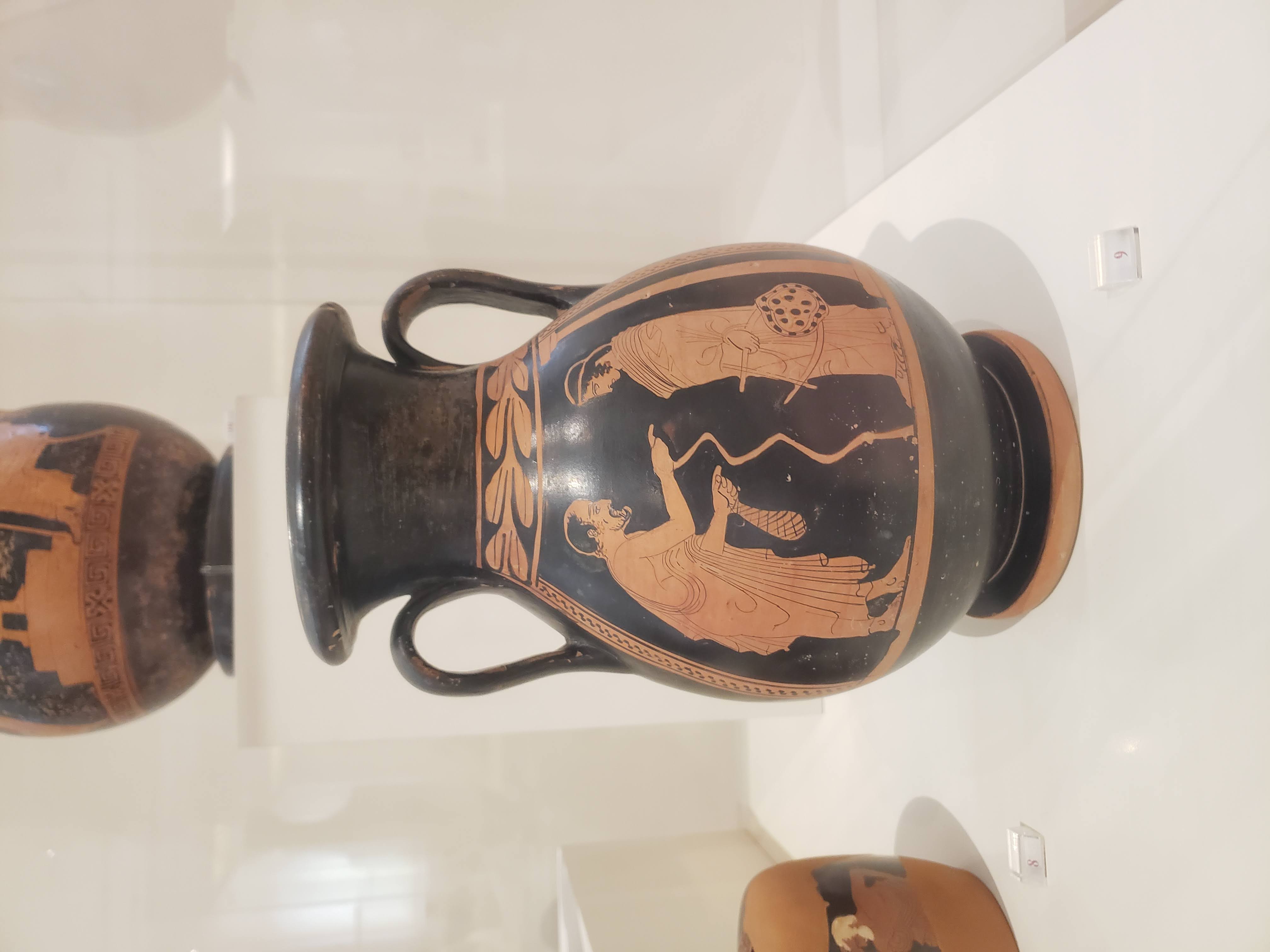
After the museum, we took a taxi to Philopappos Hill. We hiked up the hill and saw the cave referred to as Socrates’ Prison. I don’t think they had prison in antiquity, so I’m not sure when this name started. In Plato’s description of the events surrounding Socrates death, Socrates is under some sort of house arrest. The cave was barred off from people entering. I’m not sure why as the cavern seemed quite shallow and impossible to get lost in, but I guess the bars add to the mystique of the supposed prison.
We walked the rest of the way up the hill and got another couple to take a photo of us in a spot Lizy’s parents had a similar photo. The woman seemed very excited we were going to Corinth. She kept telling us that we had to stop and see the Corinth canal. I asked her if she was a civil engineer, assuming she must have some professional ties canal building. She said no. Her interest had something to do with Corinth’s importance in the Bible.
Here is the photo.
